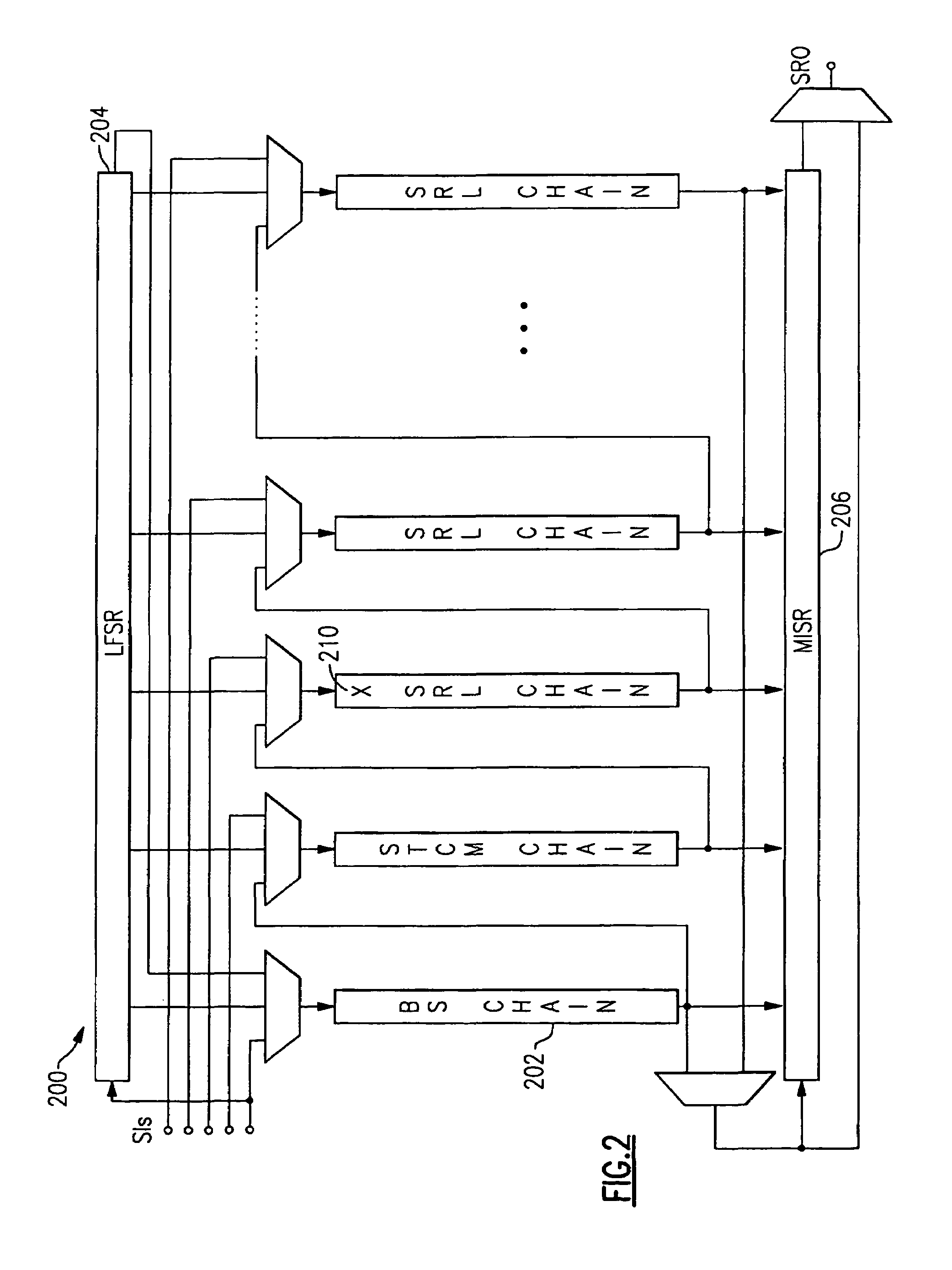Stuck-at fault scan chain diagnostic method
a fault scan and diagnostic method technology, applied in the direction of instruments, coding, code conversion, etc., can solve the problems of lssd test methodology, critical rapid determination of fault root cause, and greatly reduced access to circuit internal logi
- Summary
- Abstract
- Description
- Claims
- Application Information
AI Technical Summary
Benefits of technology
Problems solved by technology
Method used
Image
Examples
Embodiment Construction
[0017]Reference will now be made to embodiments of the invention shown in the accompanying drawings. Where possible, the same reference numerals are used throughout the drawings to refer to the same or like parts.
[0018]FIG. 2 shows a typical configuration for a LBIST circuit 200, shown in U.S. Pat. No. 5,983,380, the contents of which patent is hereby incorporated by reference. In that LBIST circuit, SRLs in the SRL chain 202 (with serial inputs (SIs) and serial output (SRO)) perform both input data launching and output data capturing. The test patterns come from a scan path that is configured into a linear feedback shift register (LFSR) 204. The test data are then outputted into the multiple input shift register (MISR) 206 for data compression. Alternate scan path shift cycles are applied to the SRLs exercising the combinational logic with the contents of the SRLs and capturing the results of the response of the combinational logic back into the SRLs where they are used as the test...
PUM
 Login to View More
Login to View More Abstract
Description
Claims
Application Information
 Login to View More
Login to View More - R&D
- Intellectual Property
- Life Sciences
- Materials
- Tech Scout
- Unparalleled Data Quality
- Higher Quality Content
- 60% Fewer Hallucinations
Browse by: Latest US Patents, China's latest patents, Technical Efficacy Thesaurus, Application Domain, Technology Topic, Popular Technical Reports.
© 2025 PatSnap. All rights reserved.Legal|Privacy policy|Modern Slavery Act Transparency Statement|Sitemap|About US| Contact US: help@patsnap.com



